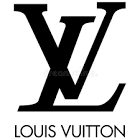Estimated electricity consumption
N/A
Countries of production presence
N/A
Louis Vuitton Malletier, commonly referred to as Louis Vuitton, is a French luxury fashion brand that has been in operation since 1854. The company is renowned for its high-end leather goods, including handbags, luggage, and accessories. Louis Vuitton is a subsidiary of LVMH Moët Hennessy Louis Vuitton SE, a French multinational luxury goods conglomerate.
As a global brand, Louis Vuitton recognizes the importance of decarbonisation and reducing its carbon footprint. The company has set ambitious targets to reduce its greenhouse gas emissions by 30% by 2020 and 50% by 2030. To achieve these goals, Louis Vuitton has implemented several initiatives to improve its corporate energy efficiency and transition to renewable energy sources.
One of the key initiatives that Louis Vuitton has undertaken is the implementation of Corporate Power Purchase Agreements (PPAs). A Corporate PPA is a long-term contract between a company and a renewable energy supplier, which guarantees the purchase of a fixed amount of renewable energy at a predetermined price. By entering into a Corporate PPA, Louis Vuitton is supporting the development of new renewable energy projects and reducing its reliance on fossil fuels.
In 2019, Louis Vuitton signed a 25-year Corporate PPA with a wind farm in Scotland. The agreement guarantees the purchase of 100 GWh of renewable energy per year, which is equivalent to the electricity consumption of all Louis Vuitton stores and workshops in France. This initiative has allowed Louis Vuitton to reduce its carbon footprint by 1,800 tons of CO2 per year.
In addition to Corporate PPAs, Louis Vuitton has also invested in on-site renewable energy generation. The company has installed solar panels on the roofs of its stores and workshops, which generate clean energy to power the buildings. For example, the Louis Vuitton store in Osaka, Japan, has a solar panel system that generates 20,000 kWh of electricity per year, reducing the store's carbon footprint by 10 tons of CO2 per year.
To further improve its corporate energy efficiency, Louis Vuitton has implemented several energy-saving measures across its operations. The company has installed LED lighting systems in its stores and workshops, which use up to 50% less energy than traditional lighting systems. Louis Vuitton has also implemented a program to optimize its heating, ventilation, and air conditioning (HVAC) systems, which has resulted in significant energy savings.
Louis Vuitton's commitment to decarbonisation and renewable energy has been recognized by several organizations. In 2019, the company was awarded the "A-" rating by the Carbon Disclosure Project (CDP), which evaluates companies' efforts to reduce their greenhouse gas emissions. Louis Vuitton was also included in the Dow Jones Sustainability Indices (DJSI) for the third consecutive year, which recognizes companies that demonstrate leadership in sustainability.
In conclusion, Louis Vuitton Malletier is a global luxury fashion brand that is committed to decarbonisation and reducing its carbon footprint. The company has implemented several initiatives to improve its corporate energy efficiency and transition to renewable energy sources, including Corporate PPAs, on-site renewable energy generation, and energy-saving measures. Louis Vuitton's efforts have been recognized by several organizations, and the company is committed to continuing its sustainability journey.
